Since IoT has become a trend in industries across the globe, there is a higher demand for strong and better-styled IoT platform. However, at the heart of each IoT application is an IoT platform—an advanced software system that communicates with and controls IoT entities as well as manages the data that flows between them and supports analysis. It therefore becomes significant for anyone implementing IoT solutions to have a well-understood systems based approach to the nature of an IoT platform. Here let me discuss in detail about four key areas of IoT platform along with their importance and how they interconnect to facilitate IoT.
Device Management Platform
The device management platform is considered to be the foundation of any IoT system. It keeps track of the IoT devices from the moment they are connected, configured, and deployed, all the way through their use, and even until their disposal.
Provisioning and Authentication: It refers to the process of identifying devices whenever they establish connections with the platform. Provisioning means to give an identification number, a check on the certificate, and the first link.
Configuration and Control: Management tools are used in changes of configurations, enabling a particular feature, and control of devices through the internet. This feature is critical in centers that have many device IDs in different configurations to assist in handling these numbers effectively.
Software and Firmware Updates: Keeping these devices up to date is important in order to have up to date protection and be able to utilize devices. The device management platform thus involves Over-The-Air (OTA) updates that assist in software and/or firmware update, in other words a patch without necessarily having to physically access the device.
Data Ingestion Layer
It is the layer that handles all data that are from the IoT devices to the central platform layer. This layer aims to gather, analyze, and preserve a huge quantity of data produced by smart objects.
Data Collection: Measures can be in terms of types, formats, and rates, the devices are capable of producing data in different ways. The daat ingestion layer normalise and aggregate this information so that it is in a ready state for processing.
Data Filtering and Processing: Noise is inherent in raw data, and it is largely unformatted; more often, it cannot be easily analyzed. This layer also eliminates noisy information, and also carry out tasks such as data transformation into a more suitable form.
Real-Time and Batch Processing: Some data as soon to be processed as possible while other data can wait for a long time before they are processed. To this end, the data ingestion layer has a capability to operate in real-time and batch mode in addressing critical events while storing non-critical data for future use.
Joint Posting and webservers & internet Protocols
Multiple, varied communication channels and multiple types of networks are required to make IoT platforms functional. These protocols enable the flow of information between devices and the IoT platform to happen smoothly.
Protocols: Some of the most used protocols for IoT communication are MQTT, HTTP, CoAP and WebSocket. All of them have different usages; for example, MQTT has less traffic and good for using in low connections while HTTP is well known for supporting web applications.
Network Compatibility: IoT platforms unlock a broad range of networks that include Wi-Fi, Cellular, LPWANs including LoRaWANs, and NB-IoT. The choice of the network depends on the need with the LPWAN being suitable for low powered long range applications.
Data Storage and Management
Essentially, data storage and retention serve as the basis for the management of the massive amounts of data delivered by IoT devices. This component captured data and arranged the data in such a way that it could be retrieved for real time use and for use in historical review.
Structured and Unstructured Data Management: IoT data is of different types: structured, such as from sensors, and unstructured, such as images or voice. The platform needs to support various data with a good and efficient way of storing it.
Scalability and High Availability: Further, the storage system must scale to the increased volume of data in order to maintain high availability. To implement these requirements distributed databases, data lakes and cloud storage are usually employed.
Data Archiving and Retention Policies: To address issues of storage expenses and meet the legal requirements, IoT platforms have limitations and deletion policies. These policies state retention periods and policy for the archiving and deletion of data.
Analytics and Insights
Data analytics is the core element in making getting value out of IoT data. In other words, the IoT platform can produce insights and these can help in enhancing decision making by giving out responses that are better and automatic.
Descriptive and Diagnostic Analytics: Such kinds of analytics provide an overview and aid in the identification of prior problems. Descriptive analytics provide meaningful analysis of patterns and trends in data, and Diagnostic analytics provides the why behind the phenomenon
Conclusion
The main components of an IoT platform are key to knowing in order to create, maintain and graduate IoT systems. Since all of these components work together to form a complete platform, each of them – device management, data intake, communication, data storage, data analysis, user interface, and security – is valuable and needed. Combined, they are the foundation to IoT solutions due to their capacity to facilitate connectivity; data and information processing; and intelligence. In the period where IoT adoption increases the importance of selecting a well-constructed IoT platform is critical in achieving the full benefits of connected devices within any organization.
Read more: https://kacmun.com/how-to-automate-customer-service/





